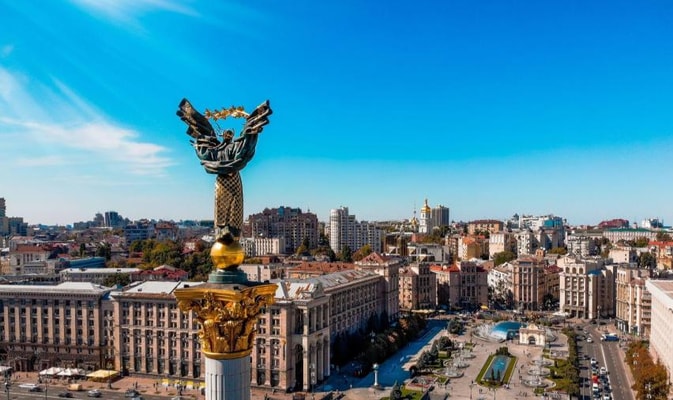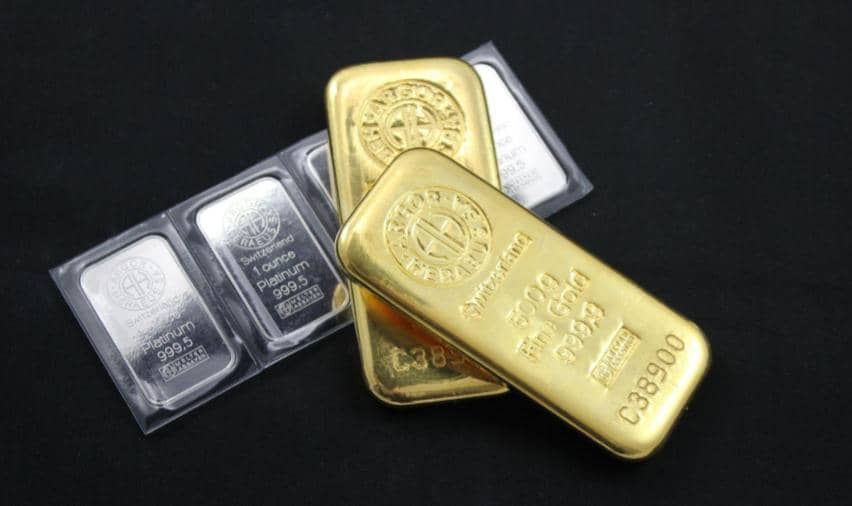War in Ukraine triggers radical shift in economic, energy outlook

1 MAR, 2022
By Stéphane Monier from Lombard Odier

War in Ukraine is changing the geopolitical and economic landscape, with profound consequences for global growth and markets. Twenty-three years after taking power in the Kremlin, President Vladimir Putin looks ready to cripple Russia’s economy for geopolitical gain. Within days, the EU has overturned decades of defence and energy policies to respond with unprecedented sanctions. The invasion will drive Russia into recession, undermining its prospects in the short and long term.

After weeks of denials of Western intelligence reports, President Putin has started the biggest conventional war in Europe since 1945, threatened to deploy nuclear weapons, and used Belarus as a base from which to launch the northern arm of the invasion of Ukraine. The Russian president has described the invasion as a “special military operation” to “demilitarise” Ukraine. Ukraine’s forces continue to fight back, mobilising reservists to resist and slow the invasion.
Ukraine gained independence following the collapse of the Soviet Union thirty years ago. With the world’s attention on fighting the Covid pandemic, Putin began massing Russian forces on Ukraine’s borders in spring 2021. He argued that Ukraine is inseparable from Russia with a common identity and history, objecting to Ukraine’s focus on closer ties with the European Union and North Atlantic Treaty Organisation (NATO).
Sanctions bite
The EU, US and allies have steadily increased sanctions over the past week, gradually isolating Russia’s leadership and institutions. Before the invasion on 24 February 2022, the European Union began imposing sanctions on Russian individuals and Germany called a halt to its approval process of the Nord Stream 2 pipeline through the Baltic Sea. Since the attack, the EU and US have frozen the assets of more individuals, and outlawed trading in sovereign debt issued by the central bank. The EU has also frozen the assets of Putin, Russian Foreign Minister Sergey Lavrov and all members of Russia’s Duma, its security council, as well as Belarusian officials linked to the war. Furthermore, the 26-nation EU has banned all Russian aircraft from its airspace.
In addition, the West has now blocked access of a number of Russian banks to the SWIFT messaging system that financial institutions use to make trades, confirm payments, exchange currencies and transfer orders. This will mean that oil and gas payments from Western firms to Russian suppliers remain possible, although routed through a more limited number of channels. For now, the energy sector has not been implicated in sanctions, and Russian oil and gas continue to flow, as they did throughout the Cold War.
Any conflict requires cash. Western countries have now frozen the Russian central bank’s access to foreign reserves, undermining Russia’s ability to finance the war as well as support its own economy and purchase roubles to prop-up its currency. Since annexing the Crimea in 2014, Putin doubled Russia’s reserves, worth USD 630 billion in foreign currency before last week’s invasion. These reserves exist as assets held by foreign central banks, including the European Central Bank and US Federal Reserve.
Since 2014, Russia and China have wound-down their dependence on the US dollar in international trade to an estimated 40% of transactions, switching instead to the euro. Russia’s central bank has pursued a de-dollarisation policy since at least 2018. In June 2021, Russia announced that its National Wealth Fund, which manages over USD 170 billion, would sell all its dollar-denominated investments, leaving 40% of its assets in euros, 30% Chinese renminbi and 20% in gold. The freezing of access to foreign reserves puts Russia on a blacklist with only three other countries: Iran, Venezuela and North Korea.
Threat to Russia’s growth, nuclear threat
Western sanctions will severely undermine Russia’s short-term outlook for both growth and inflation. The Central Bank of Russia has introduced capital controls to prevent foreign currency from leaving the country, and on 28 February increased interest rates from 9.5% to 20%. The Russian currency has collapsed, falling more than 45% year to date against the US dollar, and 35% since the invasion. Along with surging inflation, monetary policy will have to remain restrictive, stifling growth.
The scale of sanctions has dramatically shifted business sentiment. Norway’s sovereign wealth fund, the world’s largest, said that it will divest all its Russian assets, while BP Plc, the London-based energy firm, said it is ceasing business with Russia’s Rosneft PJSC, in which it holds a one-fifth stake.
Longer term, the country’s already low potential growth may decline even further. Russia’s highly centralised economic model with its dependence on energy exports, little sign of reforms, a weak business environment and ageing demographics all present structural challenges.
In response, Russia has mobilised its nuclear deterrent “to a special mode of combat duty,” Putin said in televised remarks on 26 February. “Western countries aren’t only taking unfriendly actions against our country in the economic sphere, but top officials from leading NATO members made aggressive statements regarding our country.”
Rather than responding by going on high alert, the US appears to be trying to de-escalate the situation by leaving its nuclear response status unchanged.
A policy pivot
The war has already rapidly changed decades of policy and prompted coordinated and tough responses from the EU. For the first time in its history, the EU plans to finance the purchase and delivery of air-defence and anti-tank weapons as well as other military equipment and fuel for Ukraine.
“This is a watershed moment,” said the bloc’s President Ursula von der Leyen. In an equally unprecedented move, the German government has announced that it will create a EUR 100 billion fund to boost its military spending, breaching a 2% of gross domestic product threshold.
The war is increasing political determination in Europe to be less dependent on, or even independent of Russian energy sources by accelerating the switch to renewable energy and away from fossil fuels. That can only weaken the Russian economy further still.
Germany, which currently imports around one third of its oil and half of its natural gas from Russia, announced that it plans to accelerate its transition to renewable energy. “The West will turn away from Russia… We will diversify our energy system,” German Vice Chancellor Robert Habeck said. “We will not buy Russian coal and gas in such an amount in the future.”
Testing the limits, energy dependence
While Putin looks willing to sacrifice Russia’s economy for geopolitical gain, the country may become even more strategically dependent on China.
On 4 February, following a meeting between Chinese President Xi Jinping and Putin, they issued a joint statement saying that the two nations’ friendship had “no limits.” China said in the wake of the attack that it remains open to Russian wheat exports, as part of a series of accords made at the meeting. A major customer for Russian exports, China has since said that it wants a halt to the conflict. The Chinese Foreign Ministry said on 26 February that it backs the interests of “small and medium-sized countries,” and called for a negotiated solution. Surprising some Western diplomats, China, along with the United Arab Emirates and India, all abstained from a resolution condemning Russia at the United Nations last week.
Russia is dependent on commodities, particularly oil and gas, for foreign currency and the war comes as Europe’s energy inventories are low, amplifying market volatility. Russia exports 4 million barrels of crude oil per day to Western Europe, around 30% of the region’s needs. Half of this is delivered through two pipelines running through Belarus and Ukraine while the remainder is delivered by sea. With a high risk of supply disruption from Russia and limited spare capacity from the Organization for Petroleum Exports (OPEC), the price of crude is likely to rise further, potentially reaching USD 120/barrel, from USD 102/barrel today.
Iran and the US can, on paper, supply more oil to Europe, although that partly depends on an agreement to allow Iranian supplies back on the international market. With the US facing record levels of inflation, the likelihood of a US/Iran deal has increased. We believe that could anchor prices for Brent crude to around USD 110 per barrel.
In addition, Russia provides around 40% of Europe’s natural gas. With low 2022 inventories and the halt to opening the Nord Stream 2 pipeline, natural gas supplies were already precarious. A mild winter has averted even higher prices, however, inventories are usually re-filled over the summer and any disruption in Russian deliveries would threaten this build-up. We are therefore unlikely to see prices decline later this year, forcing European demand to shift gradually to US liquefied natural gas.
Global economic impact
We see three economic sectors globally affected by the war: energy, trade/finance links to Russia, and lower consumer and investor confidence. We expect some of the negative impact to be countered by governments stepping in with new fiscal support. For the moment, we conservatively estimate these effects cutting global growth by around -0.4% in 2022, to between 3% and 3.5%.
We expect the 19-nation eurozone’s growth to decline by -1% in 2022, leaving economic expansion – adjusted for any fiscal support by governments – around 3.3%. The outlook for consumer prices in the eurozone is complicated by the prospect of rising energy prices which make up around 11% of the euro area’s basket of goods used to calculate inflation. If crude oil rises as high as USD 120/barrel, we expect eurozone inflation to increase by 3.6% by the end of 2022, and by 7% in the US. The US and China may each see a fall of -0.3% to their 2022 GDP growth, to 3.8% and 4.7% respectively.
Monetary policy from the Fed and European Central Bank will compensate for some of the worst effects. However, with benchmark interest rates already at historic lows and record levels of inflation, policymakers have little room to ease lending conditions further. The war may delay central banks’ monetary normalisation, lowering the risk of raising interest rates too quickly. However, policymakers still appear focused on addressing the economic threat of inflation.
In this uncertain environment, it is worth remembering that markets have historically proven resilient when faced with geopolitical shocks, including military conflict. Although the global recovery following the Covid pandemic is not yet complete and supply chains remain challenged, the economic fundamentals remain solid including strong corporate earnings and improved equity valuations. Haven assets such as the US dollar, Swiss franc and Japanese yen, along with gold, inevitably perform well as investors look for both quality and security.
Faced with unprecedented volatility, we are actively and carefully managing portfolio risks. We have reduced allocations to European equities and to convertible bonds, and increased exposure to a broad range of commodities, including gold, oil and industrial metals. In industrial metals, we see demand as well supported – in copper due to the rebound in Chinese activity, and elsewhere by rising demand in infrastructure and transition technologies, and as an inflationary hedge. The commodity exposure would also help us add a direct hedge in case of escalation.
High uncertainty in the weeks ahead will inevitably increase market volatility. More risk-averse investors may implement option strategies to cushion some of their equity risk, in the form of put spreads. Any such strategy will need to be carried out tactically and carefully given these elevated levels of volatility.
Related articles
 What are the perspectives for commodities? What is the global impact of them?
What are the perspectives for commodities? What is the global impact of them?By Marco Mencini

